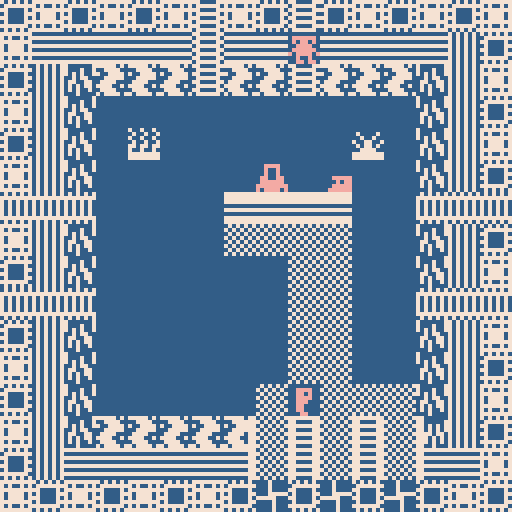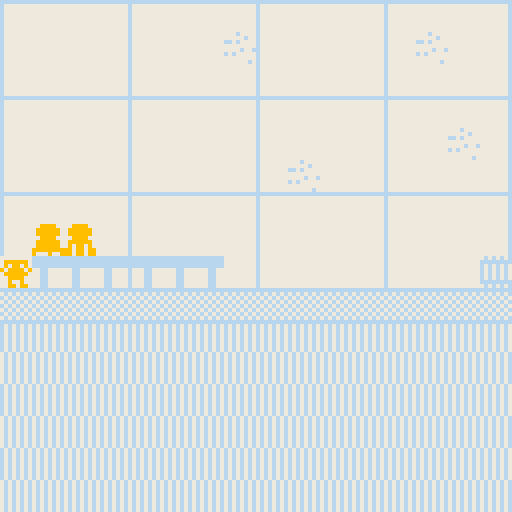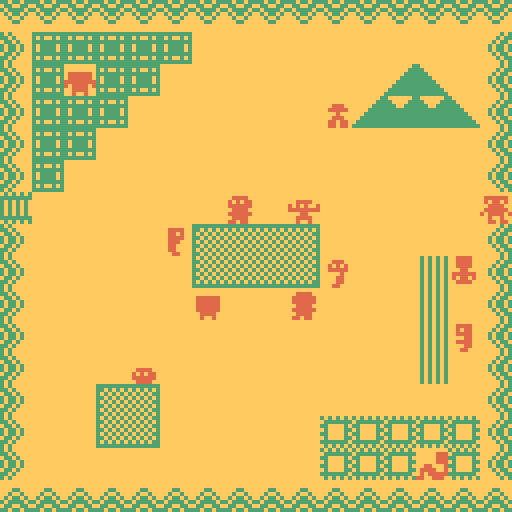THE INSTITUTE
PLAY GAME
INSTRUCTIONS: Play game by clicking above and using your arrow keys to move within and between rooms and interact with others
PHONE INSTRUCTIONS: Play game by clicking above and using your finger to drag and move the character at the bottom of the screen around the different rooms. Speak with others by moving next to them and dragging in their direction. Enter new rooms by moving towards the ladders/tracks in the game
‘The Institute’ is a Bitsy game-essay made by RESOLVE that condenses our personal and professional experiences of three types of institutions: the university, the gallery, and the local authority. In this piece, the discussion is spatialised so you can explore a number of different rooms, hearing from different characters. Invoke the old Gameboy addict deep within you and use the arrow keys to direct yourself around the spaces and interact with their inhabitants. There are some funny moments, some serious ones, and some libellous ones too, but more than all of this, just actual thoughts and conversations from which we might begin to build a more nuanced understanding of what we are fighting to change.
The ‘institute’ dominates much of our collective imagination of what it means to organise. The dream of physical, digital, or ritual spaces that in some way concentrate (and consecrate) resources, qualifying access and distribution, is entrenched in both the realities and speculative futures of progressive resistance movements and oppressive hegemonies alike. The reality of these spaces is so closely woven into the skein of our everyday lives that words like ‘institutionalised’ have fast fallen out of vogue; what use is a word for everything by everyone?




At RESOLVE, we’ve been thinking through ideas of topological, not geometrical, change to institutional space: reorganising the building blocks rather than building differently on top of them. For us there is a distinction between institutional and infrastructural practice. As we see it, to make infrastructural is to radically decentralise resource, creating spaces in which ‘access’ is perpetually a verb, not a noun, and in which dissipative practice is everyday practice. The aspiration, made tangible through both programmatic and physical interventions, is performative, responsive, and redistributive modes of operation that value and look towards leaks and loopholes in organisational space that allow communities of care and networks of maintenance to flourish. In this way, an infrastructural space does not host radical practices and underrepresented groups; it is part of them. The starting point for these types of spaces however, is a deeper understanding and mapping of ‘the institute’, not through its haughty conceptual implications but the relationships, contestations, conversations, and hesitations that constitute our experiences of it when we step through its doors, pree its insta accounts, work for it, detest it, and desire it.
From one ragtag group of institutionalisees to many others: strength and unity.
RESOLVE
Author Bio
RESOLVE is an interdisciplinary design collective that combines architecture, engineering, technology and art to address social challenges. They have delivered numerous projects, workshops, publications, and talks in the UK and across Europe, all of which look toward realising just and equitable visions of change in our built environment. Much of RESOLVE’s work aims to provide platforms for the production of new knowledge and ideas. An integral part of this way of working means designing with and for young people and under-represented groups in society through both physical and systemic intervention.